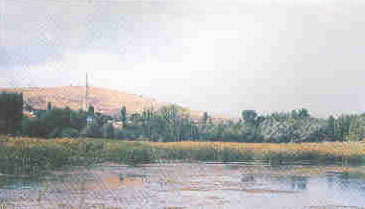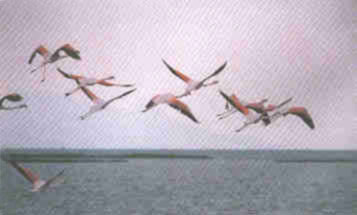|
Example: Over-exploitation of natural resources
(water); SEYFE LAKE, Turkey

Introduction
Anatolia region of Turkey, 220 km from Ankara City
and 30 km from Kirsehir City. The Seyfe catchment area
covers 152,200 hectares.
In 1960's and 1970's there were several attempts
to drain the lake water to gain agricultural land. Seyfe
Lake and the wetland area have been protected against
these actions.
The lake and the surrounding 10,700 hectare area have
been declared a "Nature Conservation Site". The same
area is to be conserved for its natural and ecological
characteristics, on an international level according
to the Ramsar Convention, 1994.

Main issues:
The lake environment holds a rich flora and fauna.
The most important fauna consists of water birds. 187
different bird species have been identified. The number
of birds increases in winter and during migration periods
reaching numbers up to 100,000. The lake area is also
an important breeding area for endangered species of
birds.
Shallow watercourses with fresh and salty water, wetlands
and the step areas give this region an abundance of
biodiversity.
|